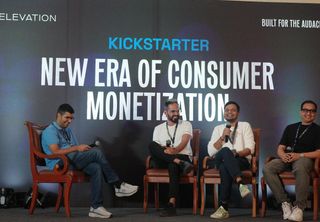Exploring Manufacturing 4.0 Part 2: Key Categories For Value Creation
Second in a three-part series decoding the next wave of opportunities in Manufacturing Tech
Exploring Manufacturing 4.0 Part 2: Key Categories For Value Creation
Second in a three-part series decoding the next wave of opportunities in Manufacturing Tech
The dawn of Manufacturing 4.0 has brought in a new era of innovation and transformation to the manufacturing industry. As we navigate this exciting frontier, it's crucial to understand the key technologies that are currently driving this revolution and the emerging trends that are shaping its future.
In our previous blog post, we discussed the evolution of manufacturing, the emergence of Manufacturing 4.0+, and the key drivers that propel the innovation and growth of startups who are building solutions in the space. We also did a detailed breakdown of the four major categories that are leading the transformation in manufacturing 4.0 - Production, Automation, Optimization, and Specialized Software.
In this second part of our series, we are exploring the heart of Manufacturing 4.0: the user personas and sub-categories. We have also dived deeper into the value creation by companies in this space, providing insights into the flourishing market and potential opportunities it holds for anyone excited about this space.
Key User Personas In The Manufacturing Sector
Before learning about the key sub-categories in the market and the outcomes of startups in this space, let’s look at the key personas and the reason why they’re eager in welcoming modern manufacturing tech solutions.
The user persona within the manufacturing sector is a mix of various roles that influence the adoption of these technologies. These personas span across different functions, right from operations and process management, to IT and sustainability management. Each persona plays a unique role in the adoption and utilization of manufacturing tech solutions.
Let's take a closer look at each of them.

When it comes to manufacturing solutions, the lines between decision-makers and users are often blurred. It's a collaborative ecosystem where everyone's input is valued and plays a role in shaping the outcome.
In the following sections, we have explored the key subcategories of Manufacturing 4.0 and the startups that are revolutionizing each of these subcategories.

Key Sub-Categories In The Space
In the expansive world of manufacturing technology, our categorization of manufacturing workflows revolves around four primary pillars of Production, Automation, Optimization and Specialized Software which align neatly with the core OEE metrics (Availability, Performance, and Quality).
1. Performance (linked to Production)
The production category focuses on enhancing manufacturing workflows to bolster productivity. The sub-categories include:
- Product Design & Development involves software tools that assist manufacturers in the design phase, allowing them to conceptualize, create, and test new products in a faster and more efficient manner.
- Amount invested in last 24 months: $728M
- Use cases/themes covered: CAD/ 3D Modelling, EDA (Electronic design automation), Prototyping
- Notable companies: Altair, Autodesk, Onshape, Altair, Fabrik, Polymerize, Scispot etc,.
- Process Control helps improve the quality and consistency of manufactured goods, minimizing variances that can lead to inefficiencies.
- Amount invested in last 24 months: $490M
- Use cases/themes covered: PLC Drivers, Production line controllers, Yield/ production optimisation
- Notable companies: Durr, Cognite, Ripik, Fabrik etc,.
- On-demand Manufacturing is a transformative approach where manufacturers produce customized products quickly and efficiently as they are demanded, thereby reducing inventory costs and enhancing responsiveness to market needs
- Use cases/themes covered: Cloud based quote to order platforms for online manufacturing
- Notable companies: Xometry, Fast Radius, Fictiv etc,.
- Contract Manufacturing Marketplaces are platforms to connect clients with manufacturers tailored to their needs
- Amount invested in last 24 months: $180M
- Use cases/themes covered: Manufacturer marketplace and directory, Custom parts production
- Notable companies: Sustainment, MFG, Fashinza, Venwiz, Bijnis etc,.
2. Availability (linked to Automation)
Automation seeks to minimize manual interventions in manufacturing processes. The sub-categories include:
- Robotics involves the integration of advanced industrial robots to take over specific labor-intensive or precision-required tasks. Robotics not only boosts productivity but also significantly improves the safety standards on the manufacturing floor.
- Amount invested in last 24 months: $866M
- Use cases/themes covered: Industrial robots for manufacturing, material handling, asset inspection, painting etc.
- Notable companies: RightHand Robotics, Bright Machines, Jaka Robotics etc,.
- Manufacturing Execution System (MES) is a computerized system that allows manufacturers to comprehensively track and document the entirety of the production process, including aspects like production planning, quality management, and defect detection
- Amount invested in last 24 months: $491M
- Use cases/themes covered: Production/ material planning, Quality Management- defect detection, Workflow Management
- Notable companies: Plex Systems, PTC, Kinexon, Ainnovation, Landing AI, Tulip, Aiara, SwitchOn, Sixsense, Firevisor, Lincode, Haber etc,.
3. Quality (linked to Optimization)
Optimization focuses on increasing visibility to track the efficiency of the manufacturing process. The sub-categories include:
- Enterprise Asset Management (EAM) involves solutions that focus on the optimal utilization and maintenance of equipment to extend equipment lifespan and reduce upkeep costs.
- Amount invested in last 24 months: $596M
- Use cases/themes covered: Asset lifecycle management, Overall Equipment Effectiveness, Maintenance Management, Digital Twin
- Notable companies: Augury, SparkCognition, MaintainX, Flutura, Uptake, Seeq, Infinite Uptime, Faclon Labs, Haber, Uptime AI etc,.
- Environment, Health & Safety (EHS) tools allow companies to monitor and manage the well-being of workers and workplace health, and the impact of manufacturing processes on the environment. Sustainability software helps manufacturers minimize their carbon footprint.
- Amount invested in last 24 months: $134M
- Use cases/themes covered: Worker safety management- computer vision, wearables, environmental & sustainability management, governance
- Notable companies: Sphera Solutions, Intelex, LeucineTech, Assert, Detect etc,.
4. Non-Core Functions (linked to Specialized Software)
While not directly tied to the core OEE metrics, specialized software supports the core processes and addresses vertical use cases. The sub-categories are:
- Manufacturing IoT provides real-time visibility into manufacturing processes, allowing companies to make data-driven decisions to optimize production.
- Amount invested in last 24 months: $653M
- Use cases/themes covered: IoT hardware middleware, digital twin, cyber physical security
- Notable companies: Cognite, Sight Machine, Augury, Infinite Uptime, Faclon Labs etc,.
- Industrial Equipment Rental include online platforms for renting or leasing industrial equipment or heavy equipment.
- Amount invested in last 24 months: $409M
- Use cases/themes covered: Industrial equipment and machinery leasing
- Notable companies: United Rentals, Loxam, TRacktor, Acme Lift
- Workforce Management software helps companies streamline human resources processes in a manufacturing unit, including scheduling and attendance, performance management, and training.
- Amount invested in last 24 months: $42M
- Use cases/themes covered: Collaboration, scheduling & attendance, performance management, operator training & guidance
- Notable companies: Drishti, Parsable, Poka etc,.
- Business Management software like ERP and CRM systems help manufacturers efficiently manage business operations end-to-end.
- Amount invested in last 24 months: $38M
- Use cases/themes covered: ERP, CRM, Factory Data Management
- Notable companies: Infor, Katana MRP etc,.
As we conclude our exploration of the key sub-categories within Manufacturing 4.0, it's important to highlight the top emerging sub-categories within the value chain that have shown significant growth (and have also received significant investor interest) in the last two years.
Based on our analysis, we’re looking at five areas where startups are expected to see significant growth over the next few years. They are:
- Product Design & Development
- Predictive Maintenance
- Process Control
- Manufacturing Execution Systems and
- Environment, Health, and Safety (EHS)
As we move forward, these areas are likely to continue driving the evolution of the manufacturing industry.
State of Startups In The Manufacturing 4.0 Space
Over the last couple of years, there has been a significant increase in the number of startups making their mark in each of the four major categories. The Production category has seen 549 new startups, while the Automation category boasts 405 startups. The Optimization and Specialized Software categories have seen 357 and 246 new startups, respectively.
Public Listings vs. Acquisitions
In the last decade, many startups in the manufacturing 4.0 space have seen successful acquisitions. Over the last 10 years, the space has seen a total of 401 acquisition deals, with 262 of those deals occurring in the last five years. Most acquisitions in the manufacturing space have been by larger legacy platforms like Ansys, Siemens, ECI Solutions, Dassault Systems, etc. A few startups in the Manufacturing 4.0 space have also made their way to the public markets through Initial Public Offerings (IPOs). Over the last 10 years, 21 companies in this space went through with their IPO offering.

The Future
The growth, funding, and successful M&As and IPOs demonstrate the dynamism and potential of this sector. The future of Manufacturing 4.0 is set to be even more exciting, driven by key tailwinds and emerging concepts that promise to revolutionize the industry.
In our next and final part of the blog series, we'll explore the key tailwinds to look for and the innovation they'll bring to this sector in the next decade. We'll delve into the emerging concepts in Manufacturing 4.0, including Digital Twin technology, Predictive Maintenance powered by AI/ML, IoT PaaS, etc. These technologies hold the potential to shape the future of manufacturing, drive growth and create new opportunities for manufacturers, investors, and entrepreneurs.
If you are building in this space or deeply interested in it, we’d love to hear from you. Do reach out to us.
If you missed part 1, you can check out The New Frontier: Opportunities in Manufacturing 4.0 and Beyond
Written by Poorvi Vijay
Related

Vridhi: Reimagining Home Lending For Bharat's Self-Employed
Ram Naresh Sunku, Co-founder, Vridhi Home Finance
11.12.2024

Investing in Plena Data
Automating manual accounting tasks and improving employee experience with robots
14.10.2021

Monetization Strategies That Work: Insights from Consumer Tech Founders
Insights on what works when it comes to monetizing consumer apps in India.
10.12.2024